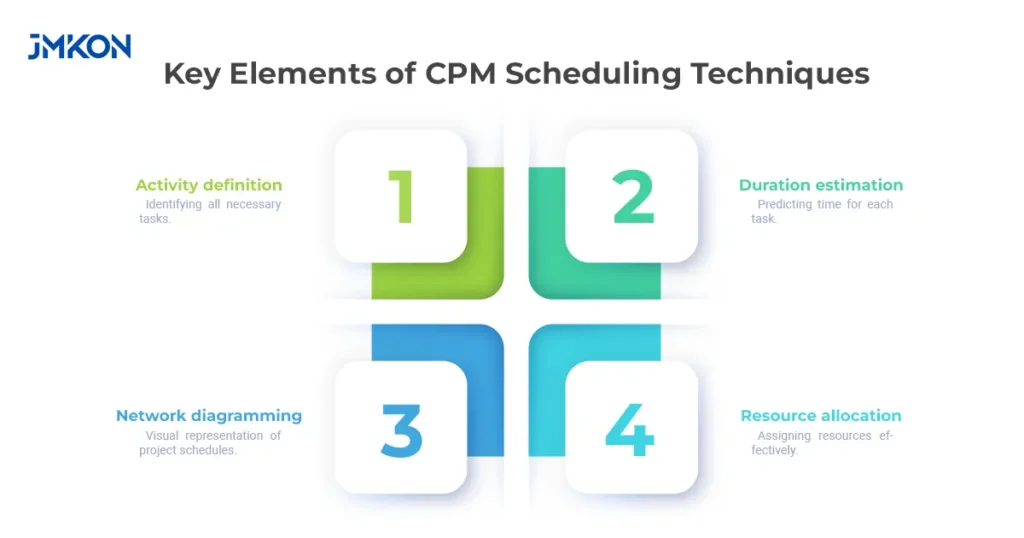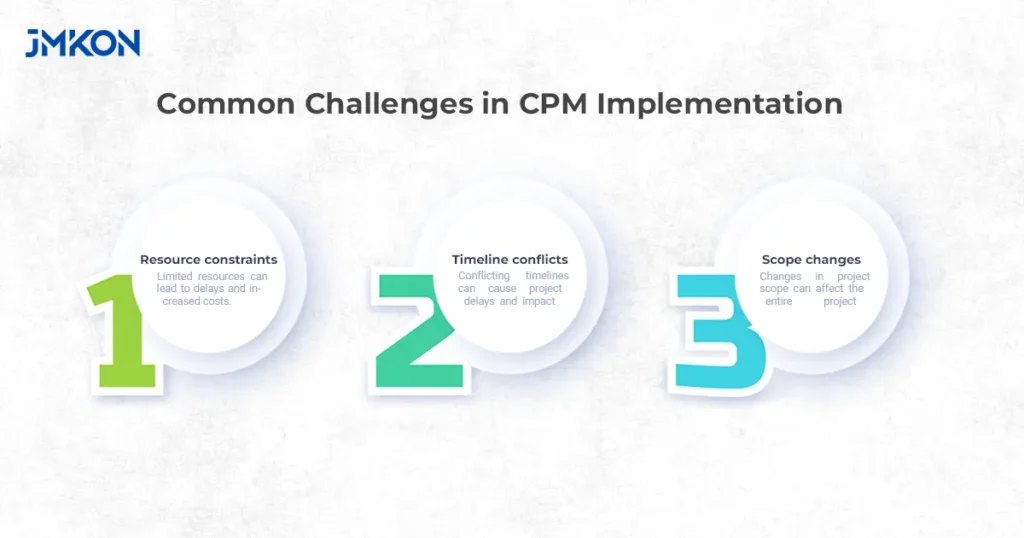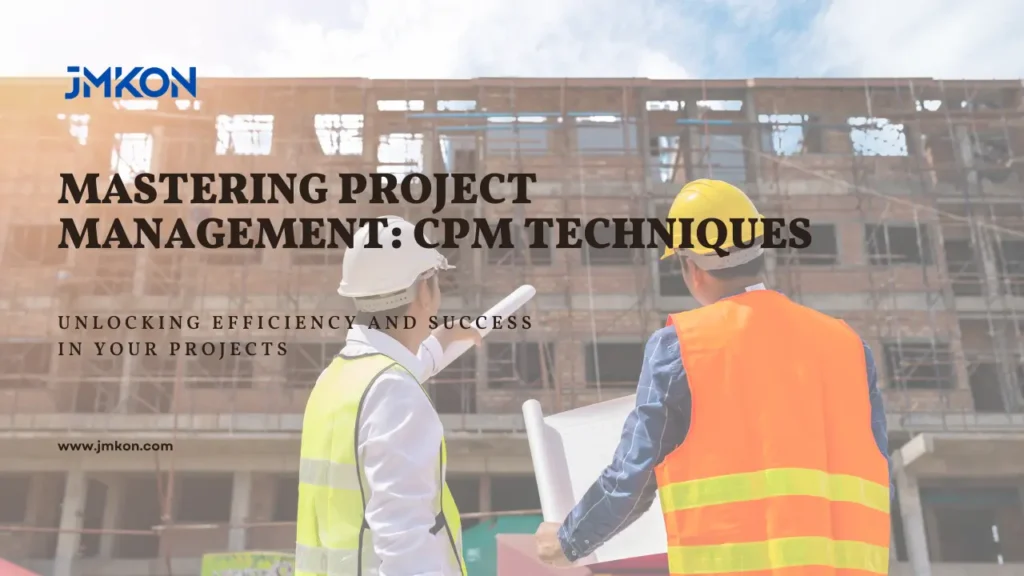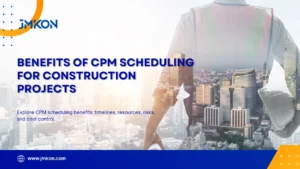A huge 70% of projects miss their deadlines, leading to big cost increases and lower quality. This shows how vital good project management is. CPM scheduling techniques are key for project managers to plan and control projects well. They help in using resources wisely, guessing how long tasks will take, and finding the most important steps.
Knowing about pert and CPM techniques is key for project managers to make smart choices and succeed. CPM scheduling is a big help in managing projects. It makes a big difference in how well a project goes.
By using CPM technique, managers can use resources better, finish tasks faster, and make projects better overall.
- Resource constraints: Limited resources can lead to delays and increased costs.
- Timeline conflicts: Conflicting timelines can cause project delays and impact overall productivity.
- Scope changes.
Understanding CPM Scheduling Techniques and Fundamentals
The Critical Path Method (CPM) is a key project management tool. It was created in the late 1950s by Morgan Walker of DuPont and James Kelley Jr. of Remington Rand. CPM is now a vital part of project management today.
To use CPM & PERT techniques well, you need to know the basics of CPM scheduling. Our team of experts can guide you in using CPM scheduling. This includes CPM optimization techniques for better efficiency. With pert and CPM techniques, you can make your project planning and execution smoother. This leads to better results and more productivity.
Some important parts of CPM scheduling are:
- Defining project activities and dependencies
- Estimating task durations and resource needs
- Finding the critical path and possible bottlenecks
Learning these basics helps project managers use CPM and CPM optimization techniques to achieve success.
The Importance of CPM in Modern Project Management
CPM project management techniques are key in today’s project management. They help organizations plan and control projects well. The CPM technique lets project managers find the critical path and plan resources. This way, organizations can boost productivity, cut costs, and improve quality.
In fields like construction, software development, and manufacturing, CPM is a big help. For example, in construction, it ensures projects are done on time and within budget.
Using CPM project management techniques brings many benefits. These include:
- Improved productivity
- Reduced costs
- Enhanced quality
Project managers see the value of CPM in modern project management. It helps them make smart choices for successful projects. Using CPM and other techniques keeps organizations ahead and helps them reach their goals.
Key Elements of CPM Scheduling Techniques

CPM and PERT techniques are key for managing projects well. Knowing what CPM technique is vital for success. Our team can guide you through the essential parts of CPM scheduling.
These parts include defining activities, making network diagrams, estimating task times, and planning resources. Project managers need to understand and use these elements well. This helps in planning, organizing, and controlling projects better.
For complex projects, PERT CPM techniques are very useful. Knowing how to apply them can greatly improve project results.
Some key elements of CPM scheduling are:
- Activity definition: identifying all tasks and activities required to complete the project
- Network diagramming: creating a visual representation of the project schedule
- Duration estimation: estimating the time required to complete each task and activity
- Resource allocation: assigning resources to each task and activity
Contact us to learn more about applying CPM scheduling techniques to your project. We can explain what CPM technique is and how to use PERT CPM for effective project management.
Implementation Steps for CPM Scheduling
To use the CPM technique in project management, you need a clear plan. Start by defining activities and making a network diagram. Then, estimate how long each task will take and decide who will do it. This helps find the most important tasks and use resources wisely.
First, list all the tasks and draw a diagram showing how they connect. Next, guess how long each task will take and assign people to it. Using pert and CPM methods helps manage resources well and finish projects on time.
Here are the main steps for CPM scheduling:
- Define activities and create a network diagram
- Estimate durations and allocate resources
- Identify the critical path and optimize resource allocation
- Monitor and control the project schedule
By following these steps and using CPM scheduling techniques, project managers can make sure their projects are done well and on time.
Relationship Between PERT and CPM scheduling techniques
It’s key to know how PERT and CPM scheduling techniques work together for good project management. PERT and CPM are tools used to plan and control projects. By understanding these, managers can pick the best method for their project.
PERT and CPM share some similarities but also have differences. Both help break down a project into tasks. Yet, they handle uncertainty and risk in different ways. CPM focuses on the project’s critical path, while PERT considers the uncertainty of task times.
Similarities and Differences
Both PERT and CPM can help optimize project schedules. But, knowing when to use each is critical. PERT is better for projects with a lot of uncertainty. CPM works well for projects with clear tasks and times.
Integration Strategies
Project managers can use both PERT and CPM together for a better plan. This mix uses the strengths of both to manage a project well. It considers the project’s critical path and the uncertainty of task times.
Our team can guide you in using PERT and CPM for your project.
Advanced CPM Scheduling Techniques
Advanced CPM scheduling techniques are key for project managers to better their project schedules and boost productivity. These include resource leveling, schedule compression, and time-cost trade-offs. These are vital parts of CPM & pert PERT techniques. By using these, project managers can manage their projects well and finish on time.
Some important advanced CPM scheduling techniques are:
- Resource leveling: This method ensures resources are evenly spread across tasks, avoiding over- or under-allocation.
- Schedule compression: It shortens the project timeline without lowering the project’s quality.
- Time-cost trade-offs: This looks at how to save costs by adjusting the project’s timeline.
Pert and CPM scheduling techniques are closely linked. Knowing their differences is key for project managers. Advanced CPM scheduling helps optimize project schedules and boosts productivity.
Common Challenges in CPM Implementation

Starting with CPM project management can be tough, and you might face some hurdles. Our team is here to help you get past these obstacles and make your project a success. One big worry is not having enough resources, which can mess up your timeline and budget.
Some common challenges in CPM implementation include:
- Changes in project scope can affect the entire project schedule and budget.
Knowing these challenges helps project managers find ways to beat them. Our team knows how to tackle these issues and guide you on the right path. Reach out to us to find out how we can help you tackle these challenges and reach your project goals.
Software Tools for CPM Scheduling
Using the right software tools is key for CPM and pert techniques. Project managers use various tools, like project management software and scheduling tools, to apply these techniques.
Popular CPM software includes Asana, Trello, and Microsoft Project, and Primaver P6. These tools have features like activity definition, network diagramming, and resource allocation. When picking a tool, think about ease of use, scalability, and integration with other systems.
Here are some key considerations for selecting the right software tool for CPM scheduling:
- Ease of use: The software should be user-friendly and easy to navigate.
- Scalability: The software should be able to handle large and complex projects.
- Integration: The software should be able to integrate with other systems and tools.
Choosing the right software tool can make CPM scheduling easier and improve project efficiency.
Best Practices for CPM Schedule Development
Creating a detailed CPM schedule is key to a project’s success. Project managers use the CPM technique to plan every task and timeline. It’s vital to set clear goals, spot critical tasks, and estimate times accurately.
Our team can guide you in making a CPM schedule that fits your project. By sticking to best practices, your project will be on time and within budget. Important practices include:
- Defining clear project objectives
- Identifying critical activities
- Estimating realistic durations
- Utilizing PERT and CPM scheduling techniques to optimize the schedule
- Implementing CPM optimization techniques to minimize delays and costs
By using these practices, you’ll have a detailed plan for your project. This plan helps you track progress, spot problems, and adjust as needed. Contact us to see how our team can help you create a CPM schedule for your project.
Optimization Strategies in CPM Scheduling
Optimization strategies in CPM scheduling are key for project managers. They help improve project schedules and cut costs. What is CPM technique is often asked. It’s about analyzing and optimizing project timelines.
CPM and PERT techniques serve similar purposes but differ. PERT CPM techniques are vital for on-time and budget-friendly project delivery.
Some important optimization strategies in CPM scheduling include:
- Time-cost trade-offs: This involves analyzing the relationship between project duration and cost to determine the most cost-effective approach.
- Resource leveling: This strategy aims to allocate resources efficiently to minimize conflicts and optimize project timelines.
- Schedule compression: This technique involves compressing the project schedule to reduce the overall duration without compromising quality or increasing costs.
By using these strategies, project managers can enhance project outcomes and boost customer satisfaction. For more details on optimization strategies in CPM scheduling, reach out to our experts in JMKON. Call (646) 847-1100 (New York), (214) 306-5834 (Texas), or (213) 293-4140 (California). They offer valuable insights and guidance on PERT CPM techniques.
Applications of CPM scheduling and Case Studies
CPM project management techniques are used in many fields like construction project management software development, and manufacturing. They help manage complex projects and ensure they’re finished on time. By using these techniques, project managers can spot important tasks, plan resources, and improve schedules.
In real projects, CPM scheduling helps with big tasks like building bridges and highways. For example, a construction company used CPM to cut the time needed to build a major highway by 20%. Software development companies also use CPM to keep projects on track and within budget.
Using CPM project management has many benefits. These include:
- Improved project scheduling and control
- Enhanced resource allocation and utilization
- Increased productivity and efficiency
- Reduced project risks and costs
Our team can help you use CPM scheduling in your projects. We can help you make your project schedules better, save money, and boost performance. Contact us to see how CPM project management can help your organization.
CPM scheduling techniques are a key tool for project managers. They help plan, execute, and monitor projects well. This leads to better efficiency and success, no matter the project size.
Want to improve your project performance with CPM scheduling techniques? Reach out to our experts at JMKON for Construction Project Management at (646) 847-1100 (New York), (214) 306-5834 (Texas), or (213) 293-4140 (California). Our team is ready to help you meet your project goals with precision and success.
FAQ
What is the Critical Path Method (CPM)?
The Critical Path Method (CPM) is a way to manage projects step by step. It was created in the late 1950s by Morgan Walker of DuPont and James Kelley Jr. of Remington Rand.
What are the core components of CPM scheduling?
CPM scheduling includes defining activities, making network diagrams, estimating time, and planning resources.
What is the importance of CPM in modern project management?
CPM is key in many fields like construction, software, and manufacturing. It boosts productivity, cuts costs, and improves quality.
What are the key elements of CPM scheduling techniques?
The main parts of CPM scheduling are defining activities, making diagrams, estimating time, and planning resources.
What are the implementation steps for CPM scheduling?
To use CPM scheduling, first define activities and make a network diagram. Then, estimate times and plan resources.
What is the relationship between PERT and CPM techniques?
PERT and CPM are both used for project planning and control. They share some similarities but also have differences. You can integrate them in various ways.
What are some advanced CPM scheduling techniques?
Advanced CPM techniques include leveling resources, compressing schedules, and making time-cost trade-offs.
What are common challenges in CPM implementation?
Challenges in using CPM include limited resources, conflicting timelines, and changes in project scope.
What are best practices for CPM schedule development?
For CPM schedule development, set clear project goals, find critical activities, and estimate realistic times.
What are optimization strategies in CPM scheduling?
Optimization strategies include making time-cost trade-offs, leveling resources, and compressing schedules.
What are some real-world applications and case studies of CPM scheduling techniques?
CPM has been used in many real projects, like in construction, software, and manufacturing. It shows its effectiveness across different industries.




